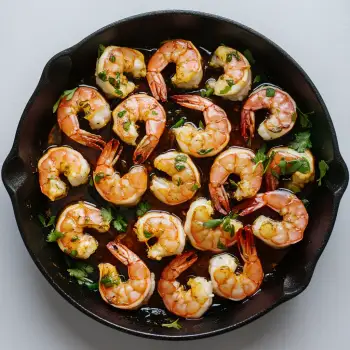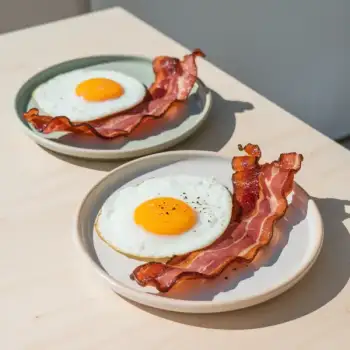
 35 minutes
35 minutesCarbonara is a classic Roman pasta dish. It's a simple yet indulgent recipe, known for its creamy sauce made from egg, cheese, and rendered pork fat, typically from guanciale. The dish is often finished with a generous amount of freshly ground black pepper, which gives it a distinctive kick helping cut the richness.


0 oz
Guanciale, diced, skin removed
0 oz
Black Pepper, freshly cracked
to taste
Pecorino, Microplaned
cups
Parmesan Cheese, Microplaned
cups
count
count
1. Boil water
Bring a pot of salted water to a boil, using just enough water to cover the pasta by 1-2 inches. This will save you some time waiting for the water to boil and will also ensure that you have plenty of starch in the pasta water to help hold your emulsion. Add just a pinch of salt given all of the salty ingredients in the dish and cook the pasta for 30 seconds less than the box recommends.
2. Render guanciale
Place the diced guanciale in a large saute pan, then turn the burner on med/low heat. Cook while stirring until the guanciale starts to brown and most of the fat has been rendered out. Once rendered add about a quarter cup of pasta water and set aside.
3. Mix egg
While the pasta is cooking, combine the egg yolks, whole egg, pecorino and parmesan cheese in a bowl. If you’re not using guanciale, add some pepper here too. Mix until smooth and set aside.
4. Sauce pasta
Once the pasta is cooked, reserve a cup of pasta water and drain. Add the spaghetti to the pan with the rendered guanciale. Over medium heat, mix and toss the Spaghetti in the pan with the rendered guanciale and it's fat. At this stage you're looking to reduce the water about 90% of the way while also finishing to cook the spaghetti. While tossing and mixing the spaghetti, you're forming an emulsion between the water and the fat with a bit of help from the starch in the spaghetti. Once the pasta is cooked, and the pasta water is almost entirely reduced, remove the pan from the heat.
5. Add the egg mixture
This next step is critical. Add the egg mixture to the pan of hot pasta, and working quickly, stir and toss the pasta to melt the cheeses and heat the egg. The most important point at this stage is to make sure you don't get the egg so hot that it forms curds. Once the cheese has all melted, you can check for consistency and seasoning. If you notice the sauce is so tight that the pasta is clinging together, add a tablespoon of the reserved pasta water. If the sauce is too thin, you can very carefully work on and off of the heat while stirring until the egg begins to thicken. If you need to go back to the heat, put the pan on the stove for no more than 5 seconds at a time while stirring as the eggs won't hesitate to curdle. Putting the pan back on the heat is best avoided if possible, as a slightly thin sauce is much better than a curdled one.
6. Plate and serve
Taste for seasoning, plate and serve.




Comments (0)